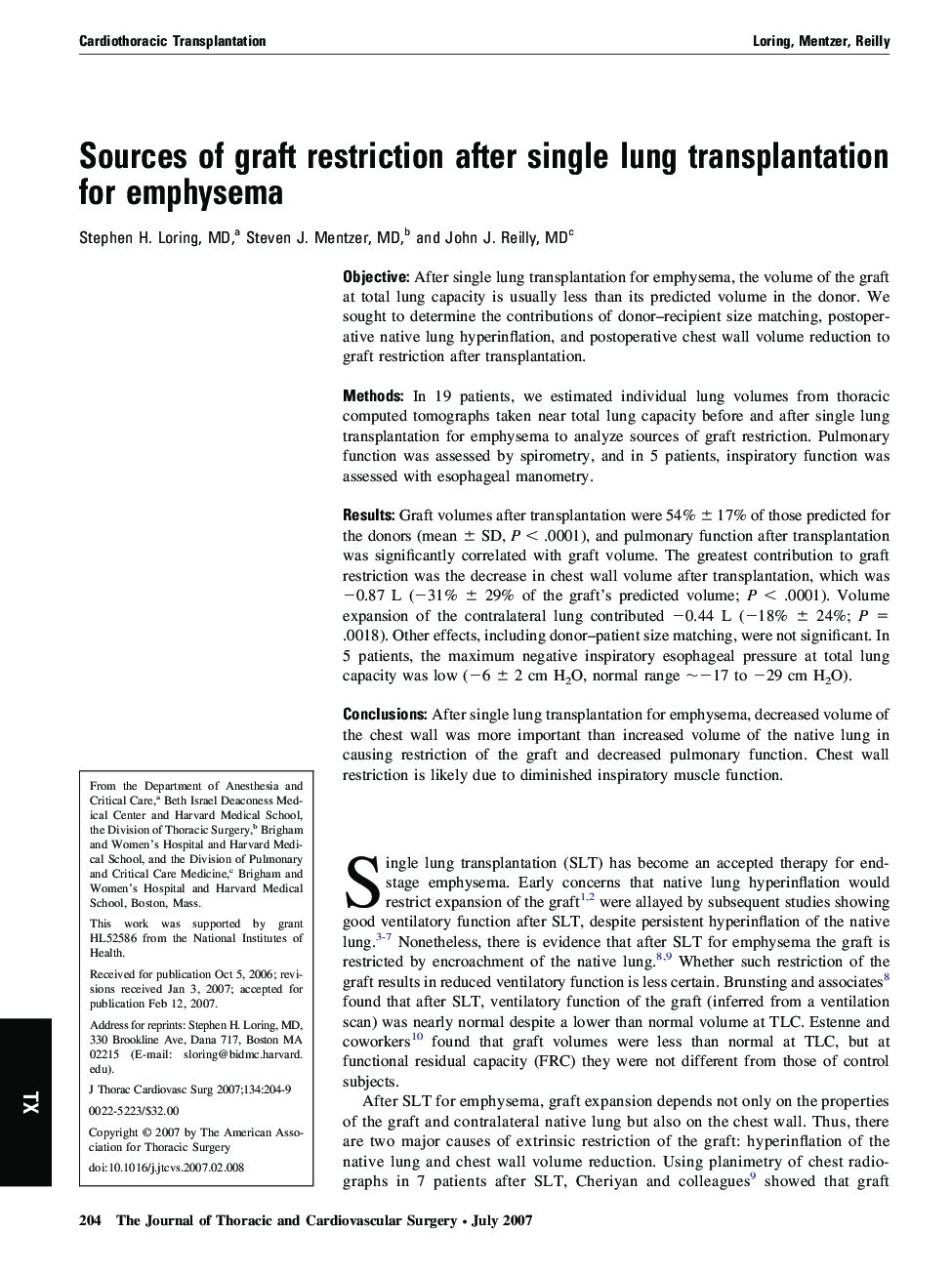| Article ID | Journal | Published Year | Pages | File Type |
|---|---|---|---|---|
| 2983472 | The Journal of Thoracic and Cardiovascular Surgery | 2007 | 6 Pages |
ObjectiveAfter single lung transplantation for emphysema, the volume of the graft at total lung capacity is usually less than its predicted volume in the donor. We sought to determine the contributions of donor–recipient size matching, postoperative native lung hyperinflation, and postoperative chest wall volume reduction to graft restriction after transplantation.MethodsIn 19 patients, we estimated individual lung volumes from thoracic computed tomographs taken near total lung capacity before and after single lung transplantation for emphysema to analyze sources of graft restriction. Pulmonary function was assessed by spirometry, and in 5 patients, inspiratory function was assessed with esophageal manometry.ResultsGraft volumes after transplantation were 54% ± 17% of those predicted for the donors (mean ± SD, P < .0001), and pulmonary function after transplantation was significantly correlated with graft volume. The greatest contribution to graft restriction was the decrease in chest wall volume after transplantation, which was −0.87 L (−31% ± 29% of the graft’s predicted volume; P < .0001). Volume expansion of the contralateral lung contributed −0.44 L (−18% ± 24%; P = .0018). Other effects, including donor–patient size matching, were not significant. In 5 patients, the maximum negative inspiratory esophageal pressure at total lung capacity was low (−6 ± 2 cm H2O, normal range ∼−17 to −29 cm H2O).ConclusionsAfter single lung transplantation for emphysema, decreased volume of the chest wall was more important than increased volume of the native lung in causing restriction of the graft and decreased pulmonary function. Chest wall restriction is likely due to diminished inspiratory muscle function.
